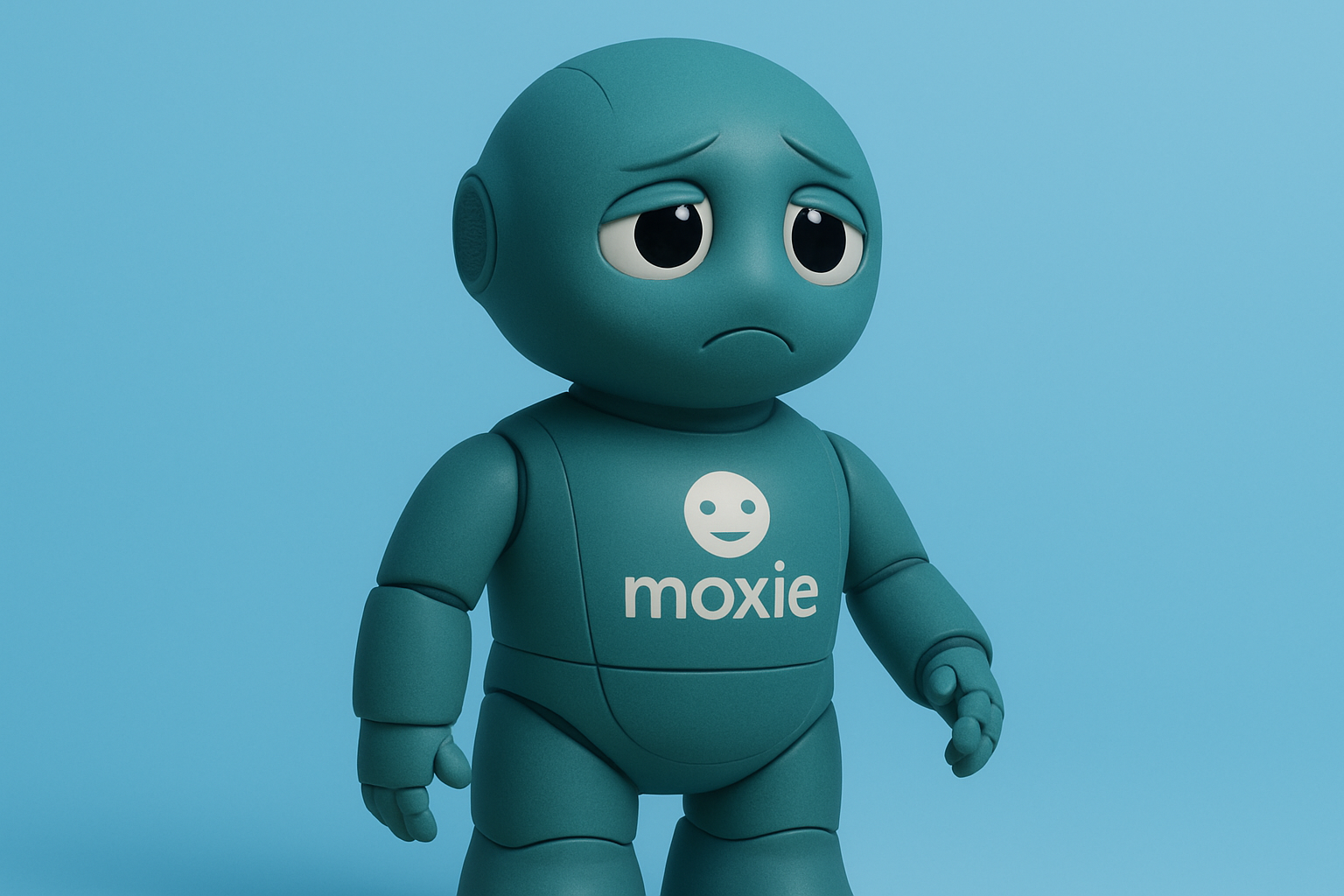
Why Moxie Failed: A Cautionary Tale from the World of Educational Robots
In 2020, a child-sized robot named Moxie made headlines around the world. Created by Embodied Inc., a startup founded by former NASA JPL roboticist Paolo Pirjanian, Moxie was marketed as a revolutionary companion robot designed to help children develop social and emotional skills through daily interactions.
With sleek hardware, a natural voice, expressive facial animations, and AI-driven daily “missions,” Moxie promised to bring embodied AI into the heart of early childhood development. The vision was ambitious, the backing was strong (SoftBank, Intel, Toyota), and the media was excited.
But just a few years later, Moxie quietly disappeared from the market.
What happened?
🤖 What Was Moxie?
Moxie was designed to be a child’s emotional AI companion — not just a toy, and not just a tutor. It could:
- Recognize faces and voices
- Carry out simple, open-ended conversations
- Deliver daily learning and social-emotional development tasks
- Offer companionship through “engaged presence”
Unlike educational tablets or talking plush toys, Moxie embodied the vision of embodied AI — AI that interacts with the physical world and lives in the same space as its users.
❌ Why Did It Fail?
Moxie didn’t fail because it lacked vision. It failed because it tried to do the right thing in the wrong way, at the wrong time, for the wrong audience.
1. Too Expensive, Too Confusing
At a price of $1,499 USD, Moxie was significantly more expensive than any child-targeted tech on the market — especially for something that didn’t directly help with homework, language skills, or test prep.
Parents couldn’t see a clear return on investment. It wasn’t a toy, nor a tutor — so what exactly was it?
2. The Tech Wasn’t There Yet
While Moxie was marketed as an emotionally intelligent robot, its natural language capabilities were limited, and it often fell back on scripted or rigid responses. Reviews noted delays, misrecognitions, and frustrating repetitions.
In essence: it looked like a robot friend, but behaved like a smart speaker with a cute face.
3. Short Engagement Lifespan for Kids
Children often lost interest in Moxie after just a few days. Its activities, conversations, and storylines lacked the long-term narrative hooks or evolving challenges that keep young minds engaged (unlike video games or story-driven toys).
4. High Friction for Parents
Ironically, for a robot meant to give parents a break, Moxie required parents to set it up, monitor use, manage schedules, and occasionally help troubleshoot.
The dream of a “hands-off AI companion” turned into another tech chore.
🧠 It Wasn’t the Idea That Failed
Despite the market failure, Moxie’s core vision remains compelling — and even ahead of its time.
✅ It Reframed AI as Emotional, Not Just Functional
While most education tech focuses on academic outcomes, Moxie tackled social-emotional learning (SEL) — a vastly under-addressed domain in edtech.
✅ It Applied Developmental Psychology to Robotics
Moxie was built on real theories of child development — from Piaget to Vygotsky. It tried to shape behavior, empathy, and self-expression — not just deliver content.
In a world of screen addiction and shrinking attention spans, that effort matters.
🔍 What Can We Learn from Moxie?
Moxie’s story offers valuable lessons to developers, educators, and parents alike:
- Parents want “smart, low-maintenance AI.” Moxie was smart, but high-friction.
- Kids want interactive, evolving narratives. Moxie’s interactions felt flat and repetitive.
- Products need to grow with the child. Moxie didn’t adapt enough to keep up with children’s changing curiosity.
🚀 Is There Hope for a “Moxie 2.0”?
Imagine a future version of Moxie that is:
- Open-source and customizable
- Affordable (under $200)
- Built with modular intelligence (e.g., ChatGPT plugins, user-defined personalities)
- Designed with adaptive storytelling, like a choose-your-own-adventure AI
That’s the kind of robot that might not just survive — but thrive — in homes and classrooms.
🌱 Final Thoughts
Moxie didn’t fail because it was a bad product. It failed because it was too early, too ambitious, and too isolated from real-world parenting and child behavior patterns.
Yet it paved the way for a new category of companion AI — emotionally aware, physically present, and designed for children’s growth, not just entertainment or test scores.
And perhaps, that makes Moxie a necessary step — not a wrong one.
Would you want your child to have an AI friend someday? Let us know what you think in the comments below! 👇
💡 For Parents: When considering AI companions for your child, look for products that offer clear educational value, reasonable pricing, and low maintenance requirements. Start with simpler, more affordable options before investing in complex systems.